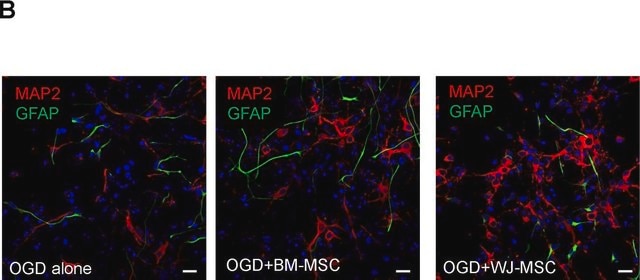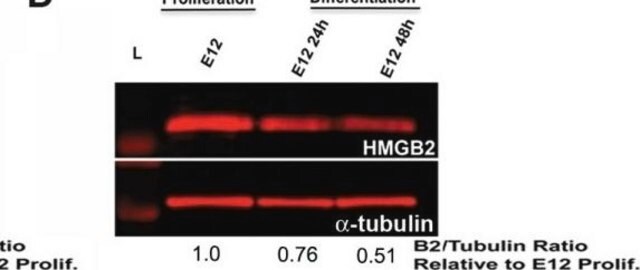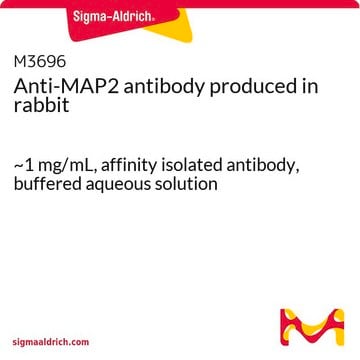AB5543
Anti-MAP2 Antibody
CHEMICON®, chicken polyclonal
Sinônimo(s):
Anti-MAP-2, Anti-MAP2A, Anti-MAP2B, Anti-MAP2C
About This Item
Produtos recomendados
Nome do produto
Anti-MAP2 Antibody, Chemicon®, from chicken
fonte biológica
chicken
Nível de qualidade
forma do anticorpo
purified immunoglobulin
tipo de produto de anticorpo
primary antibodies
clone
polyclonal
reatividade de espécies
rat
fabricante/nome comercial
Chemicon®
técnica(s)
immunocytochemistry: suitable
immunohistochemistry: suitable
western blot: suitable
nº de adesão NCBI
nº de adesão UniProt
Condições de expedição
dry ice
modificação pós-traducional do alvo
unmodified
Informações sobre genes
rat ... Map2(25595)
Especificidade
Imunogênio
Aplicação
Neuroscience
Neuronal & Glial Markers
Neurofilament & Neuron Metabolism
Immunohistochemistry on frozen tissue sections. Suggested fixative is 4% paraformaldehyde (1-10 minutes) followed by 5 minutes in -20°C methanol.
Immunocytochemistry: 1:5,000-1:10,000 on cells in tissue culture fixed for 1-10 minutes in 10% formalin followed by five minutes in -20°C methanol.
Optimal working dilutions must be determined by the end user.
Descrição-alvo
forma física
Armazenamento e estabilidade
Nota de análise
Positive = cerebral cortex. Negative = liver or kidney.
Informações legais
Exoneração de responsabilidade
Não está encontrando o produto certo?
Experimente o nosso Ferramenta de seleção de produtos.
recomendado
Código de classe de armazenamento
10 - Combustible liquids
Classe de risco de água (WGK)
WGK 2
Certificados de análise (COA)
Busque Certificados de análise (COA) digitando o Número do Lote do produto. Os números de lote e remessa podem ser encontrados no rótulo de um produto após a palavra “Lot” ou “Batch”.
Já possui este produto?
Encontre a documentação dos produtos que você adquiriu recentemente na biblioteca de documentos.
Os clientes também visualizaram
Active Filters
Nossa equipe de cientistas tem experiência em todas as áreas de pesquisa, incluindo Life Sciences, ciência de materiais, síntese química, cromatografia, química analítica e muitas outras.
Entre em contato com a assistência técnica










